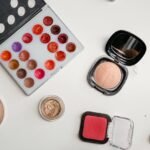Beauty advice travels fast in our digital age, but not all of it deserves our trust. With social media influencers, wellness gurus, and well-meaning relatives sharing tips at lightning speed, distinguishing between scientifically-backed facts and misleading myths has never been more crucial. Recent dermatological research and clinical testing evidence reveals that many widely-believed beauty practices are not only ineffective but potentially harmful to your skin health.
The Science Behind Skincare: Understanding What Really Works
Modern cosmetic science operates on rigorous evidence-based research principles. Unlike the dubious practices of centuries past—such as lead-based makeup or crocodile dung baths—today’s skincare products undergo extensive clinical trials to verify their safety and efficacy. Dermatologists and cosmetic chemists use sophisticated testing methods including patch testing, stability assessments, and biomarker analysis to ensure products deliver promised results.worthywaterloo+3
The skin barrier function relies on complex physiological processes involving ceramides, lipids, and natural moisturising factors. Understanding these mechanisms helps separate genuine skincare benefits from marketing hype. Active ingredients must penetrate the stratum corneum effectively, requiring specific molecular weights under 500 Daltons and precise pH levels for optimal performance.clevelandclinic+2
Clinical evidence consistently shows that ingredient concentration, formulation stability, and delivery systems matter far more than price tags or exotic origins. This scientific foundation helps explain why some expensive products fail whilst affordable alternatives with proven active compounds deliver superior results.pubmed.ncbi.nlm.nih+1
Common Beauty Myths Debunked by Research
Expensive Products Always Work Better
This persistent myth costs consumers millions annually. Clinical studies demonstrate that price correlates poorly with effectiveness. Drugstore brands often contain identical active ingredients like hyaluronic acid, retinol, and niacinamide at therapeutic concentrations. The key lies in formulation quality and ingredient bioavailability, not packaging aesthetics or brand prestige.harvard+3
Research findings consistently show that affordable skincare products can outperform luxury alternatives when they contain proven actives at appropriate concentrations. Smart consumers focus on ingredient lists rather than marketing claims or celebrity endorsements.
You Can Shrink Your Pores
Pore size remains genetically predetermined throughout life. No topical treatment can permanently alter pore diameter, despite countless products claiming otherwise. However, deep cleansing, exfoliation, and oil control can minimise pore appearance by removing debris and reducing sebum production.apollo247+3
Niacinamide and salicylic acid prove particularly effective at improving pore appearance through anti-inflammatory and comedolytic actions. Professional treatments like microneedling may temporarily improve skin texture but cannot fundamentally change pore structure.
Natural Ingredients Are Always Safer
The natural fallacy misleads many consumers into believing botanical ingredients carry no risks. Clinical testing reveals that natural compounds can trigger allergic reactions, photosensitivity, and contact dermatitis just as frequently as synthetic alternatives.connect.in-cosmetics+3
Essential oils, plant extracts, and botanical actives require the same rigorous safety assessments as laboratory-created ingredients. Regulatory authorities subject all cosmetic ingredients to identical toxicological evaluations regardless of their origin.tentamus+1
Oily Skin Doesn’t Need Moisturiser
This dangerous misconception leads to barrier dysfunction and increased sebum production. Dehydrated skin overcompensates by producing excess oil, creating a cycle of congestion and inflammation. Lightweight moisturisers containing gel-based formulas or non-comedogenic ingredients maintain hydration balance without clogging pores.apollohospitals+3
Hyaluronic acid and glycerin provide excellent moisture retention for oily skin types without adding heaviness or greasiness. Clinical trials consistently demonstrate improved skin barrier function when appropriate moisturisation is maintained.
Skincare Ingredients That Actually Work

Retinoids: The Gold Standard
Retinol and its derivatives represent the most scientifically validated anti-ageing ingredients available. Decades of research confirm their ability to stimulate collagen synthesis, accelerate cell turnover, and reduce hyperpigmentation. FDA approval for photoaging treatment sets retinoids apart from less-proven alternatives.thedeconstruct+3
Prescription tretinoin offers superior potency compared to over-the-counter retinol, but both require gradual introduction to prevent irritation. Clinical studies show consistent wrinkle reduction and skin texture improvement with regular use.vogue+1
Alpha and Beta Hydroxy Acids
Glycolic acid, lactic acid, and salicylic acid provide proven exfoliation benefits through different mechanisms. AHAs work on the skin surface, whilst BHAs penetrate pores to remove keratin plugs and sebaceous debris.nyib+3
Professional peels and at-home formulations both demonstrate efficacy when used appropriately. Concentration levels between 5-10% for AHAs and 1-2% for BHAs provide optimal results with minimal adverse reactions.healthline+1
Vitamin C and Antioxidants
L-ascorbic acid and its stable derivatives offer genuine antioxidant protection against environmental damage. Clinical trials document collagen stimulation, melanin inhibition, and free radical neutralisation with consistent use.sparshhospital+3
Vitamin E, ferulic acid, and niacinamide complement vitamin C activity whilst providing additional anti-inflammatory benefits. Combination formulas often prove more effective than single-ingredient products.thedeconstruct+1
The Importance of Clinical Testing
Cosmetic clinical trials ensure product safety and validate efficacy claims through controlled methodologies. Double-blind studies, placebo controls, and objective measurements using instruments like corneometers and tewameters provide reliable data on product performance.pmc.ncbi.nlm.nih+3
Regulatory compliance requires comprehensive safety assessments including patch testing, irritation studies, and stability evaluations. These protocols protect consumers whilst enabling informed decision-making based on scientific evidence rather than marketing promises.novobliss+3
Post-market surveillance through cosmetovigilance systems monitors adverse reactions and ensures ongoing product safety. This continuous monitoring helps identify potential issues and refine formulation standards across the industry.pmc.ncbi.nlm.nih
Building an Evidence-Based Skincare Routine
Dermatologist-recommended routines focus on proven fundamentals: gentle cleansing, broad-spectrum sunscreen, appropriate moisturisation, and targeted active ingredients. Clinical evidence supports this minimalist approach over complex multi-step regimens that may cause irritation or product interactions.lindushealth+3
Morning routines should emphasise protection through antioxidants and SPF 30+ sunscreen applied daily regardless of weather conditions. Evening routines provide optimal repair opportunities through retinoids, hydroxy acids, or peptide treatments.skincancer+3
Gradual introduction of active ingredients prevents adverse reactions whilst allowing skin adaptation. Patch testing new products reduces sensitisation risks and helps identify problematic ingredients before widespread application.healthline+1
Frequently Asked Questions
Q: How long should I wait to see results from new skincare products?
A: Clinical studies typically measure improvements after 4-12 weeks of consistent use. Cell turnover cycles require 28-40 days, making this the minimum timeframe for visible changes.pubmed.ncbi.nlm.nih+1
Q: Can I use multiple active ingredients together?
A: Combination therapy often proves more effective than single ingredients, but pH compatibility and interaction potential must be considered. Retinoids and AHAs may cause excessive irritation when used simultaneously without proper spacing.clevelandclinic+1
Q: Do I need professional treatments if I have a good at-home routine?
A: Professional procedures like chemical peels and laser treatments can complement home care but aren’t essential for healthy skin. Cost-benefit analysis should consider maintenance requirements and potential risks.cliniexperts-research+1
Q: How important is the order of applying skincare products?
A: Thinnest to thickest consistency generally works best, allowing proper absorption and ingredient penetration. Water-based serums before oil-based moisturisers maximises bioavailability.connect.in-cosmetics+1
Q: Should I change my routine seasonally?
A: Environmental factors may require minor adjustments in moisturiser weight or sun protection levels, but core active ingredients can remain consistent year-round.clevelandclinic+1
The beauty industry continues evolving through scientific research and technological advancement. By focusing on evidence-based practices rather than trends or myths, consumers can achieve healthier, more resilient skin whilst avoiding potentially harmful misinformation. Clinical testing, dermatological expertise, and ingredient transparency provide the foundation for effective skincare decisions in our modern beauty landscape.
- https://worthywaterloo.ca/beauty-myths-debunked-fact-vs-fiction-in-modern-beauty-treatments/
- https://www.health.harvard.edu/womens-health/dont-fall-for-these-skin-myths
- https://pmc.ncbi.nlm.nih.gov/articles/PMC4969411/
- https://aurigaresearch.com/clinical-trial/cosmetic-clinical-trial/
- https://my.clevelandclinic.org/health/body/10978-skin
- https://connect.in-cosmetics.com/ingredients-formulation/the-science-behind-skincare/
- https://thedeconstruct.in/blogs/skin-information/science-behind-skincare-ingredients
- https://pubmed.ncbi.nlm.nih.gov/31840424/
- https://www.nature.com/articles/d42473-019-00413-z
- https://www.apollo247.com/health-topics/skin-disorder/7-common-skincare-myths-busted
- https://www.adhikarilifeline.com/common-skin-care-myths-debunked/
- https://www.nyib.edu/the-science-of-skincare-understanding-ingredients-and-their-benefits/
- https://www.silkor.com/iraq/en/blog/skincare-beauty-myths/
- https://www.apollohospitals.com/health-library/common-skincare-myths-busted
- https://www.healthline.com/health/beauty-skin-care/skin-care-ingredients-dictionary
- https://ecomundo.eu/en/blog/assessing-cosmetic-ingredient-safety-key-regulations-guide
- https://www.tentamus.com/lab-analyses/cosmetic-testing/sicherheitsbewertung-kosmetik/
- https://pmc.ncbi.nlm.nih.gov/articles/PMC9634450/
- https://beautyfridge.com/blogs/news/7-beauty-myths-not-to-fall-for
- https://www.clinikally.com/blogs/news/unveiling-the-truth-beauty-myths-that-harm-your-skin
- https://www.sparshhospital.com/blog/the-science-behind-skincare-understanding-the-ingredients/
- https://www.hmpgloballearningnetwork.com/site/thederm/site/cathlab/event/evidence-based-skin-care
- https://www.vogue.com/article/skincare-myths
- https://health.clevelandclinic.org/skin-care-ingredients-explained
- https://skintypesolutions.com/blogs/skincare/cosmetic-skin-care-ingredients-dictionary
- https://cliniexperts-research.com/clinical-trial-india/dermatology-and-cosmetic-trials/
- https://novobliss.in/unveiling-the-science-behind-skin-care-exploring-the-world-of-skin-care-clinical-studies/
- https://www.itclabs.com/the-vital-role-of-cosmetic-testing-ensuring-beauty-and-safety/
- https://www.lindushealth.com/blog/the-ultimate-guide-to-skin-care-clinical-trials
- https://pmc.ncbi.nlm.nih.gov/articles/PMC3079206/
- https://www.skincancer.org/blog/10-surprising-things-about-your-skin/
- https://www.scconline.org/Resources/Journal-of-Cosmetic-Science
- https://www.forbes.com/sites/jonisweet/2021/12/28/11-skincare-myths-you-should-stop-believing-according-to-dermatologists/
- https://rjtcsonline.com
- https://www.nivea.co.uk/advice/lifestyle/beauty-beliefs
- https://www.fda.gov/cosmetics/cosmetics-science-research
- https://tenajsaloninstitute.edu/debunking-common-beauty-myths-expert-insights/
- https://www.benthamscience.com/journal/193
- https://library.scconline.org/journal-of-cosmetic-science/
- https://www.sciencedirect.com/journal/journal-of-dermatologic-science-and-cosmetic-technology
- https://depology.com/blogs/news/10-common-beauty-myths
- https://www.mydcsi.com/2024/02/29/debunking-skin-care-myths-separating-fact-from-fiction/
- https://forefrontdermatology.com/skin-fun-facts/
- https://www.lindushealth.com/blog/the-importance-of-cosmetic-clinical-trials-in-advancing-beauty-science
- https://www.aad.org/media/stats-numbers
- https://www.aad.org/skinserious/infographics
- https://www.intertek.com/clinical-studies/cosmetics-safety-efficacy-testing/
- https://www.primeopenaccess.com/international-journals/dermatology-research-skininsights.asp
- https://www.fda.gov/cosmetics/cosmetics-science-research/product-testing-cosmetics
- https://pmc.ncbi.nlm.nih.gov/articles/PMC8178570/
- https://www.metastatinsight.com/report/cosmetic-testing-service-market
- https://www.safecosmetics.org/resources/regulations/
- https://www.driveresearch.com/market-research-company-blog/beauty-market-research-measuring-the-effectiveness-of-advertising/
- https://benchmarkingcompany.com/beauty-product-testing/
- https://cosmetic.chemlinked.com/database/view/1676
- https://cdsco.gov.in/opencms/opencms/en/Cosmetics/cosmetics/
- https://jddonline.com/articles/clinical-evidence-of-dermal-and-epidermal-restructuring-from-a-biologically-active-growth-factor-ser-S1545961619P0290X
- https://aurigaresearch.com/cosmetics-testing-lab/






